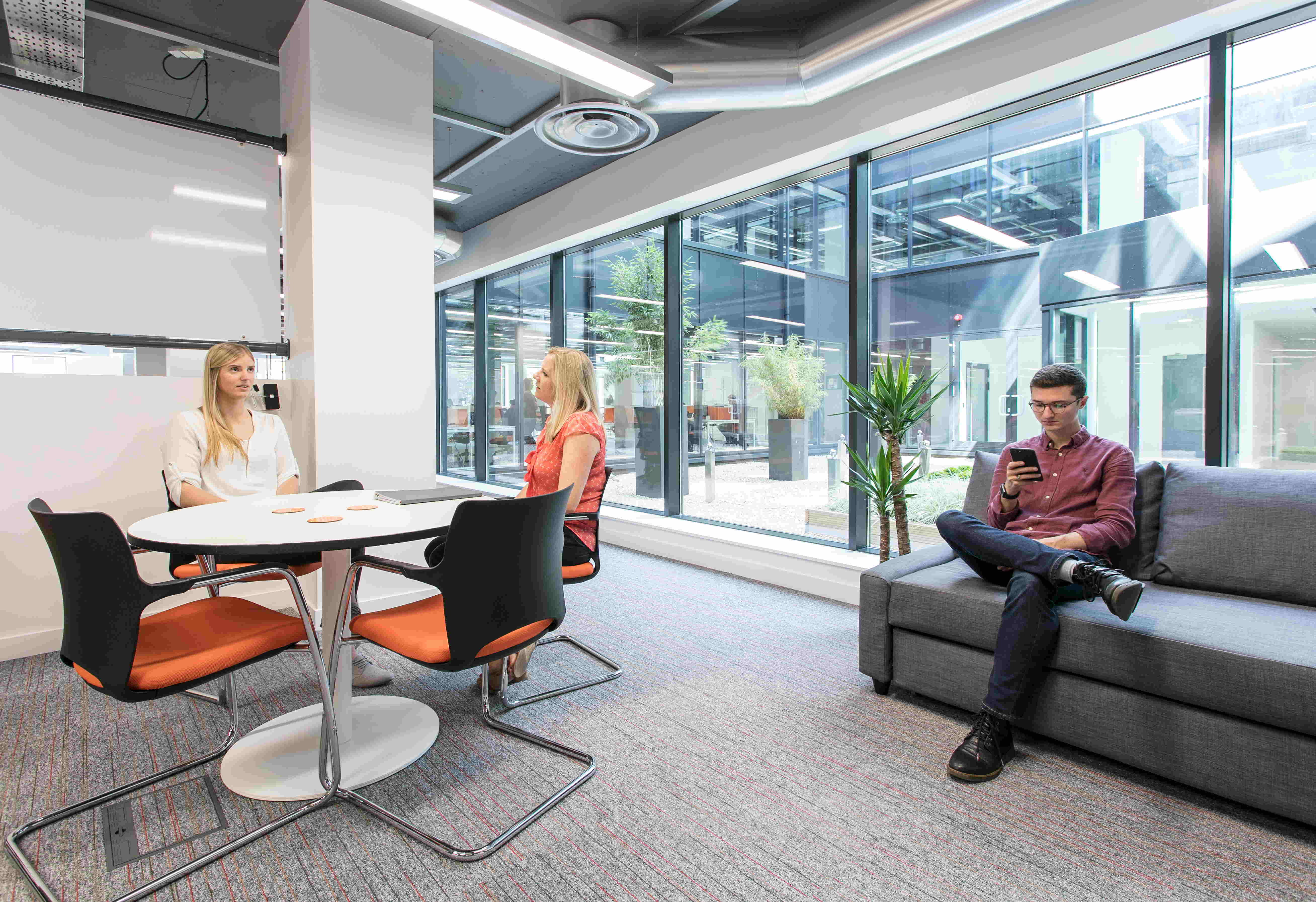
March, 2018
Why go green? If you want to improve the productivity and quality of your workplace, here are some ways design can make an impact. We consider the findings of a recent Health, Wellbeing & Productivity in Offices report.
No matter what business you’re in, three elements that are essential for any good office are the health of employees, the level of productivity in their work and the wellbeing of everyone working there. According to the Health, Wellbeing & Productivity in Offices report by the UK Green Building Council, multiple elements can be changed in the average office to be greener, more efficient and overall promote better health.
Here are a few design strategies that an office can put in place to ‘go green’:
The benefit of a view
Gone are the days of closed-off offices and one window per room; with the evolution of the greener, more workforce-friendly office, the ability to see the outside world has become more critical than ever. Utilising floor to ceiling windows – or just larger, airier space with natural light, lets in that all-important sunshine that’s far better for productivity and mood than unnatural strip lighting and the glow of monitors. If there’s a view already there, utilise it as a way to increase your employees’ focus.
Agile working
Taking influence from modern working methods, developing an agile workplace involves readjusting the design on an office based on a more fluid and efficient way of working. In many offices, on any given day at least some of the desks won’t be used – and by choosing to work in agile teams or more fluid groups, with no permanent workstation, you can promote better productivity for everyone. Design elements such as comfortable flooring that supports active movement and an open layout can help to develop such an environment.
Improving light
For a greener environment, getting rid of old lighting and closed-off designs is vital. An office that is designed to make use of natural light, as well as lower-cost and lower-usage lighting compared to harsh light bulbs such as LEDs, can both establish greener frameworks for design and a more comfortable working atmosphere. Light can be intrinsic to excellent design work and is grounded in both psychology and the design world as ways to elevate offices to a more positive place.
Look & feel
From sustainable and green materials such as cork walls, living walls or even the placement of desks to windows, the feel of an office can go a long way to improving the atmosphere. Replacing the flooring with hardwearing vinyl in a natural wood effect (designed for heavy traffic), increasing the amount of art or even changing up the colour scheme of a room can significantly improve the workplace. Consider starting small with changes in colours and work upwards.
Flexibility
An essential element to strategising for office design is the ability to be flexible. Offering multiple ways of working, from open office design to meeting rooms and agile desk structures, allows your employees both a productive place to work and adaptations for individual productivity and development styles. Open-mindedness should play into the design of a green office in the same way it does in other policies; offering small choices and options to give your staff their individual sense of control.
Redesigning your office to be green from the ground up might sound daunting; but breaking down the approach into a tight list of design considerations can really help. The UK Green Building Council Report can really help with this, as well as providing compelling evidence as to why these considerations are important.
Feature Image: Many of these design strategies were considered by Interaction on a recent project, which highlights making the most of natural light, how a view improves the working environment, and the importance of flexibility of workspaces.